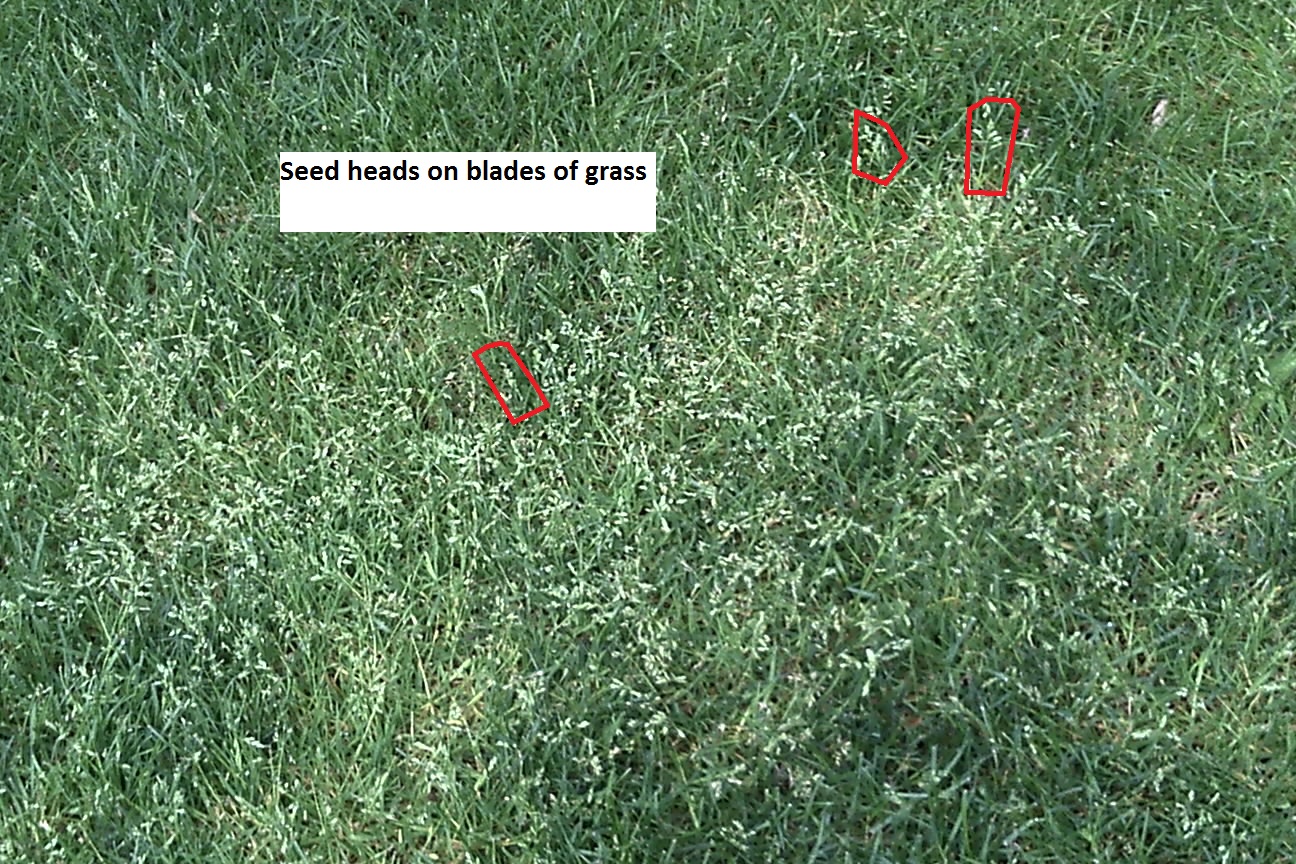
The red shapes are hilighting individual blades of grass going to seed.
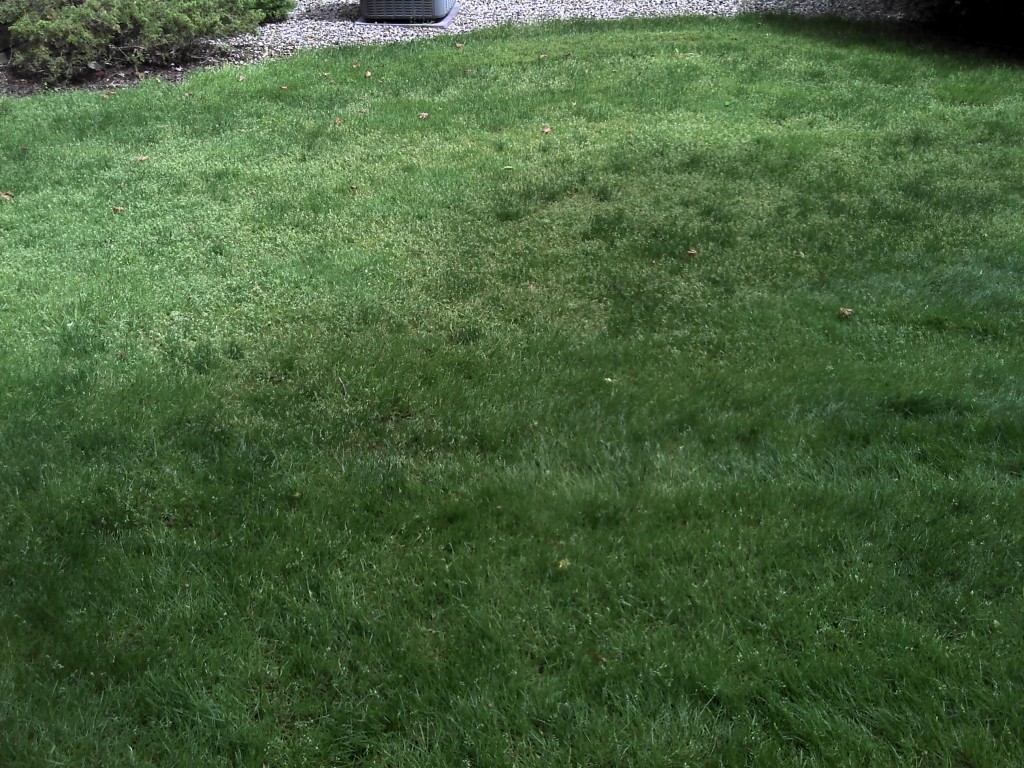

The red shapes are hilighting individual blades of grass going to seed.

Remember how nice March was? We are seeing the consequences of record setting heat that caused trees and shrubs to bud out too early. Heavy frosts in April damaged the buds and now leaves are curling, turning brown, and even falling from trees. The frost damage looks bad, but it will not threaten the tree. The trees are healthy despite their appearance.
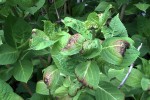
Hydrangea with frost damage
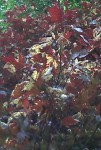
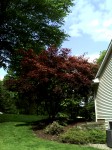
This Japanese Maple had no frost damage on the left where it was under a large tree. The right half had lots of damage.
I am often asked about using Milky Spore to control grubs. Apparantely MSU receives a lot of questions also. Follow this link for the validity of Milky Spore as a grub control. http://www.news.msue.msu.edu/news/article/a_question_about_milky_spore_applications_and_grubs
This Spring I have been frequently asked how the hot temperatures we’ve experienced in March will affect our crabgrass control. Now that we have finally returned to “normal temperatures” I can better answer this question.
Spring accelerated from snow on the ground on March 3 to 62 degree soil temperatures on March 18. Crabgrass germinates when soil temperatures are at 55 degrees for 3 consecutive nights. We had over a week of soil temperatures above 60 degrees. Forsythia were blooming the 3rd week of March, which usually happens in mid-April. Crabapple trees were blossoming the next week, this usually happens in late April or early May. The grass was growing the last week or March, this usually does not happen until late April. We managed to rocket through 8 weeks of climate change in 3 weeks.
I struggled with the decision to continue applying crabgrass control knowing that it was too late to be effective. I had many discussions with other lawn care professionals and even professors at MSU. We were in unchartered territory and nobody knew what to do. History and logic told us that “this cannot be happening”, but it was. 80 degree temperatures in March are not uncommon. However, sustained high day time and night time temperatures are unprecedented. The temperatures usually plummets 40 degrees after an 80 degree day in March.
I made the decision in mid-March to continue applying crabgrass control with the hope of a frost. A frost would kill any crabgrass that germinated and our pre-emergent would then be effective stopping more crabgrass from germinating. I am glad I made that decision because this week we finally received that frost. Hopefully our weather is back to “normal” and we will have effective crabgrass control. Rest assured that if we applied your crabgrass control and you get crabgrass this summer, we will take care of it.
As a small business owner I spend a lot of my time putting out fires. Correction, this was the first one I ever put out.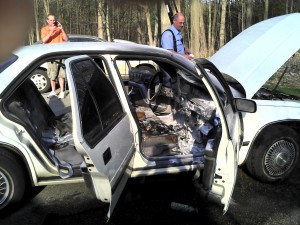 Darryl’s car had an electrical fire that started shortly after he got to work on Wednesday, 3/21/12.
Darryl’s car had an electrical fire that started shortly after he got to work on Wednesday, 3/21/12.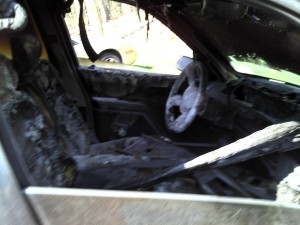
We have officially killed our first mole of the year. We are hoping to break another record this year.
Visit our booth at the Forest Hills Expo on March 17. Click here for more information.
Voles are field mice and can cause problems by damaging lawns, gardens, tree plantings and other plants. Voles occasionally will use tunnels developed by moles to gain access to flower bulbs and other plant roots. This damage often is blamed on moles by mistake. Moles feed on insects and earthworms and rarely consume plant materials.
Probably the most extensive and costly damage caused by voles occurs to woody plants in winter. At times voles severely damage or kill many young trees and shrubs, including orchard, windbreak and landscape plantings. Voles will eat the green inner bark layer of trees and shrubs when preferred foods are unavailable.
They survive quite well under the snow because the snow cover insulates them from the cold air and predators cannot find them. Voles chew the grass at ground level and build nests with the grass. This creates trails throughout the lawn. Voles are also able to tunnel in the bark. They leave holes the size of quarters in the bark.
We offer a granular repellent application to deter their digging in your bark beds. One application in your foundational beds is only $50.00. Contact us for a price to treat your entire lawn and other non-foundational beds.